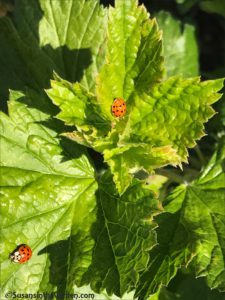Organic Pest Control
Got bugs? I’d like to help you determine whether they are bad bugs, beneficial insects, or benign ones that don’t adversely affect our plants. I designed this organic pest control guide a few years ago. But in April 2021, something great happened! I wrote the book, The Vegetable Garden Pest Handbook, and it is much more complete plus it is filled with over 200 photos of the different stages in the life cycles of the most commonly-seen vegetable bugs plus the damage they can cause to your veggie plants. You can learn more about it by going to the Books page on this website.
Before we jump into this guide – which covers both vegetable and fruit pests – let me give you some background on which zone I’m in and what I grow here:
I live on 5 acres in Eastern Washington state. This region is technically in USDA zone 6 — according to their map, that is! — but most of us are in zone 5, with some outlying areas being in zone 4. Like all areas, our climate varies over time.
I primarily grow edible crops: vegetables, tree fruits and berries. But I also grow a LOT of ornamentals — shrubs, perennials, annuals, bulbs and a several trees here and there. I have a lot of native shrubs as well.
Because I live in the Inland Northwest, I should clarify that we don’t get things like fire ants or Japanese beetles (halleluia!). So this guide won’t address those issues. I hope you’ll understand. But there are so many insects we all see — aphids, slugs, tomato hornworms and so on — and those are the types I’ll be covering here.
This guide is a work in progress. You can count on me to continually expand on it. If you have a suggestion for it, drop me a note at Susan@SusansintheGarden.com.
Here is what you’ll find in this guide:

